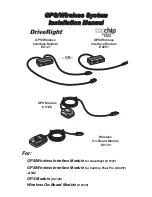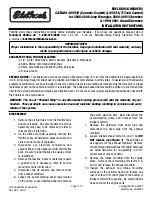
Driving in Water
Heavy rain can mean flash flooding, and flood waters
demand extreme caution.
Find out how deep the water is before you drive through
it. If it is deep enough to cover the wheel hubs, axles,
or exhaust pipe, do not try — you probably will not
get through. Also, water that deep can damage the axle
and other vehicle parts.
If the water is not too deep, drive slowly through it. At
faster speeds, water splashes on the ignition system and
your vehicle can stall. Stalling can also occur if you
get the tailpipe under water. And, as long as the tailpipe
is under water, you will never be able to start the
engine. When you go through water, remember that
when the brakes get wet, it may take you longer to stop.
{
CAUTION:
Driving through rushing water can be
dangerous. Deep water can sweep your vehicle
downstream and you and your passengers
could drown. If it is only shallow water, it can
still wash away the ground from under your
tires, and you could lose traction and roll the
vehicle over. Do not drive through rushing
water.
See
Driving in Rain and on Wet Roads on page 4-32
for
more information on driving through water.
4-30
Summary of Contents for 2006 Avalanche
Page 5: ...These are some examples of symbols that may be found on the vehicle v ...
Page 6: ... NOTES vi ...
Page 168: ... NOTES 2 92 ...
Page 171: ... NOTES 3 3 ...
Page 172: ...Instrument Panel Overview 3 4 ...
Page 284: ... NOTES 3 116 ...
Page 360: ... NOTES 4 76 ...
Page 376: ...When you open the hood on the 8 1L V8 engine here is what you will see 5 16 ...
Page 478: ...5 118 ...
Page 484: ... NOTES 5 124 ...
Page 499: ...Engine Drive Belt Routing A Air Conditioning Compressor 6 15 ...
















































